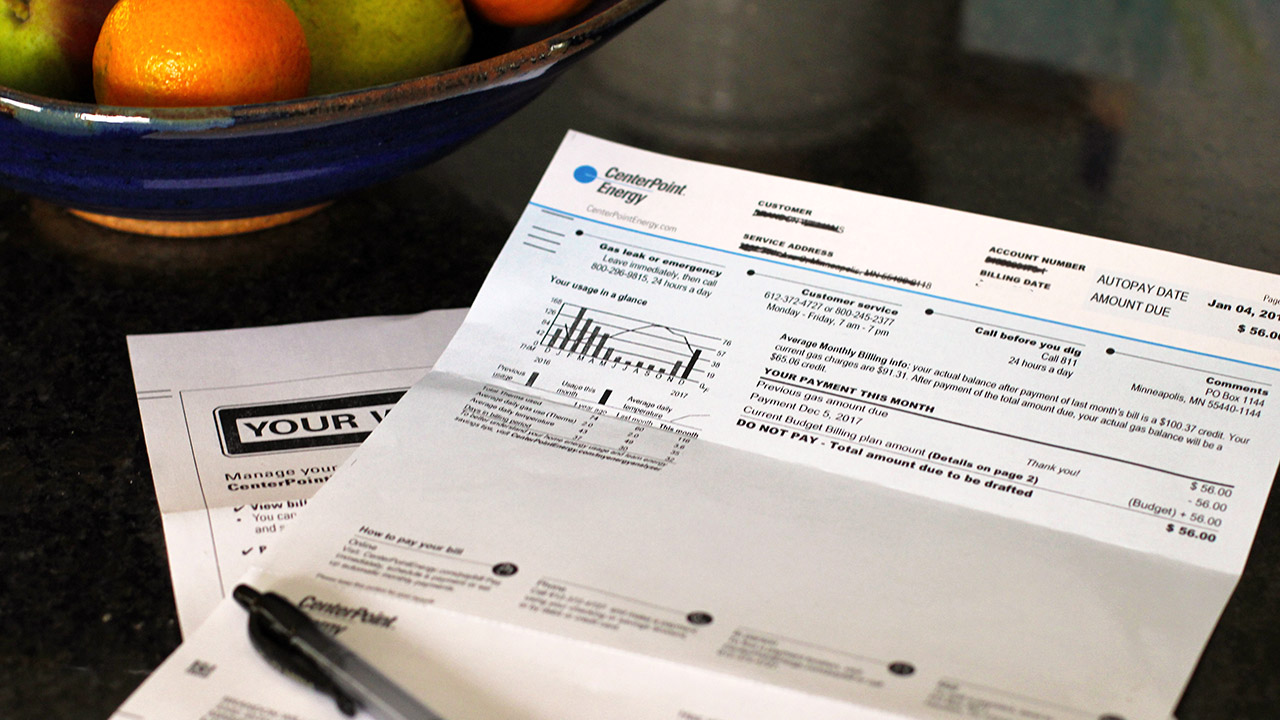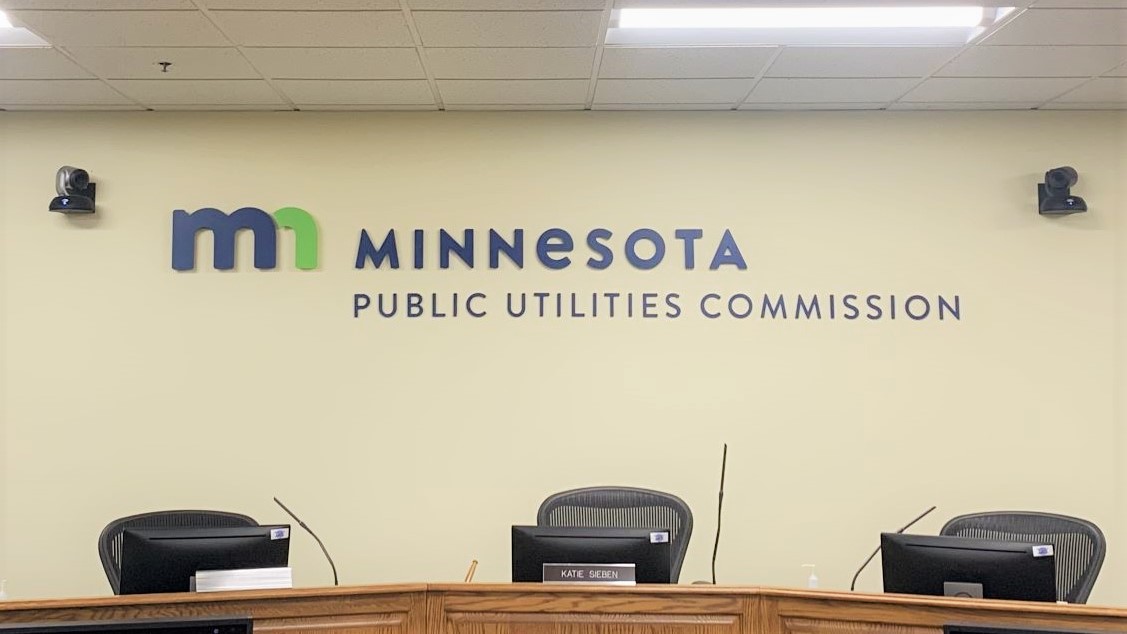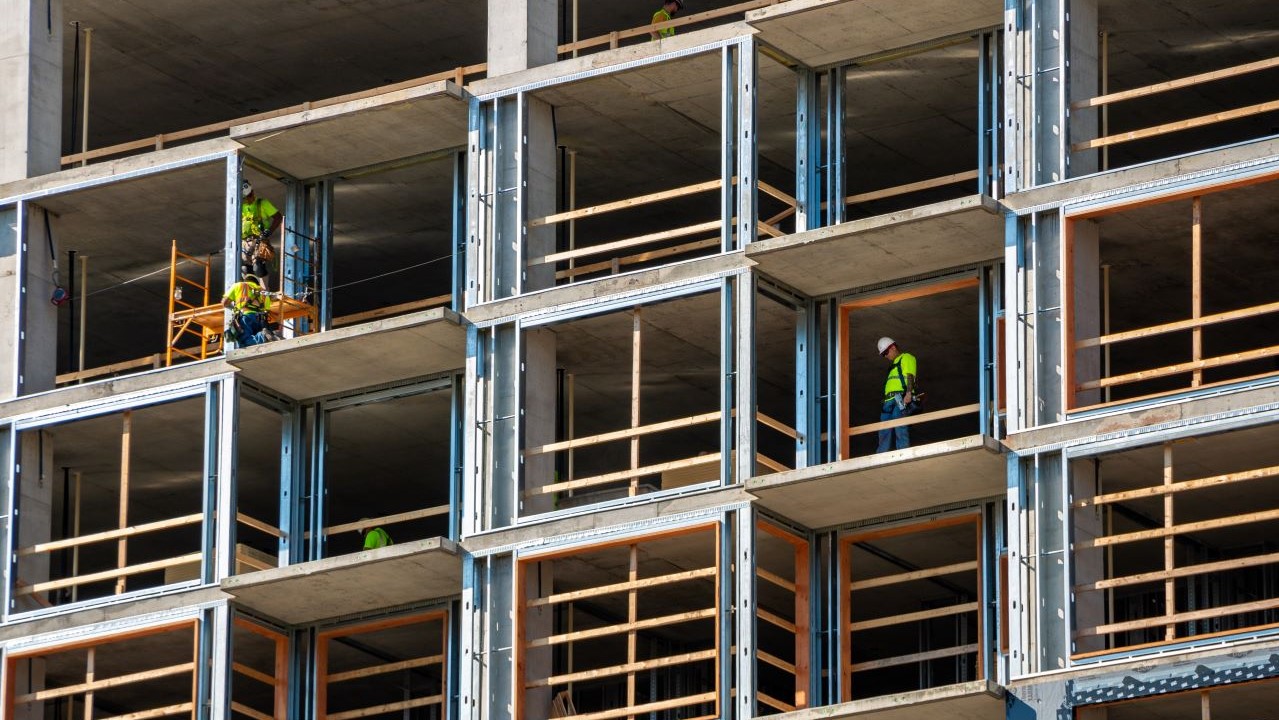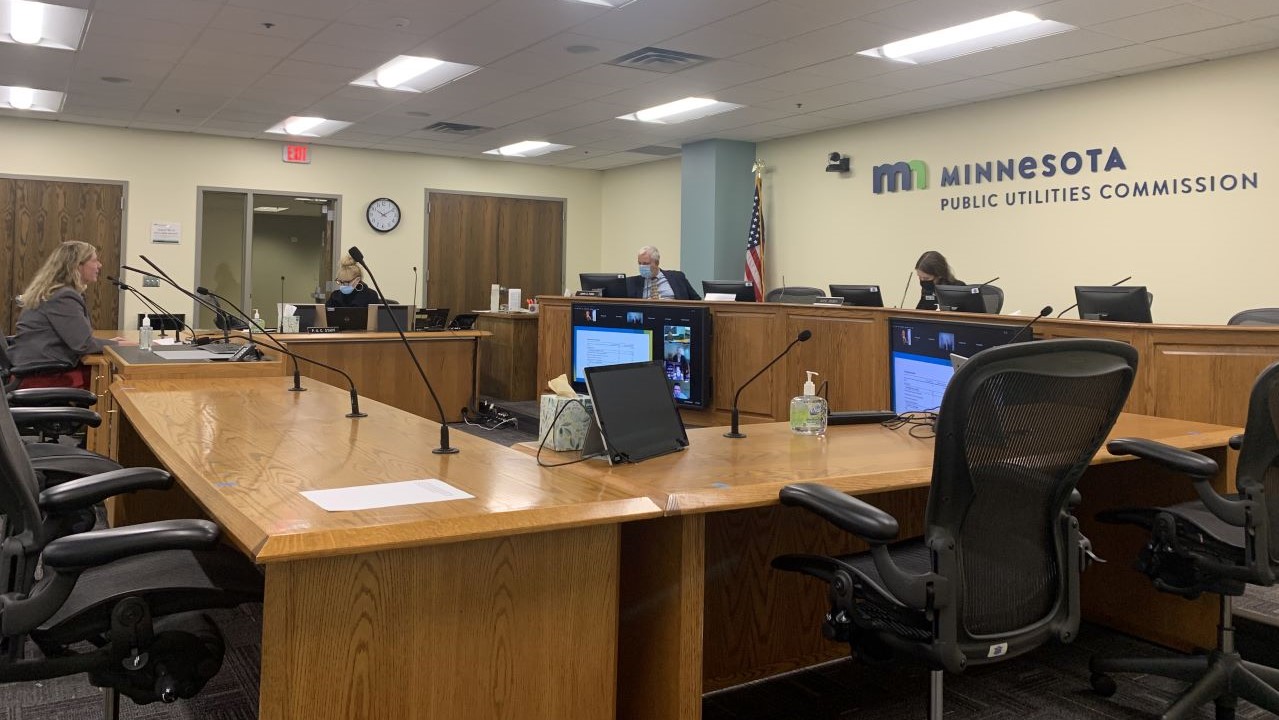
Fresh Energy has been working for nearly thirty years (we’re celebrating our 30th Anniversary in 2022!) to promote increased clean, renewable energy options for all utility customers at affordable, accessible prices. That means that we work with utility companies, the Minnesota Public Utilities Commission (PUC), other stakeholders, and community members to advocate for policies that drive Minnesota toward a just and equitable clean energy economy. Often, this requires Fresh Energy to engage in rate cases at the PUC—the regulatory processes that set the rates a utility is allowed to charge customers, who are, in the utility world, called ratepayers.
But why is this regulation needed in the first place? How exactly does it work? Are there opportunities for the public to be involved? In this blog, we’ll answer those questions and more. Dive in with us!
Why do we regulate electric and gas utilities?
In the first half of the 20th century, electricity began to be seen as a public good. Access to electricity improved the quality of life and generally became cheaper to produce thanks to economies of scale. As a result, there was a huge push across the U.S. to electrify the country. A similar effort was also in effect for fossil gas, especially in colder climates like Minnesota. Policymakers did not want multiple companies’ electric or gas infrastructure to be installed because, in their eyes, doing so would have been duplicative or wasteful. But, allowing one company alone to have the exclusive right to provide electric or gas service—or, in other words, to act as a legal monopoly—also introduces another risk: the company treating its customers unfairly or setting rates too high.
Throughout history, this economic problem is endemic to goods and services that have been “affected by the public interest,” as a British court put it back in the 1600s. Over the centuries that followed, governments have regulated the rates and services of grain elevators, warehouses, railroads, and telephone service. The regulation of electric and gas utilities followed the same general construct as the goods and services that had been regulated as public utilities in the past.
This regulatory construct is often called the regulatory compact. The regulatory compact, which is not a legal compact or contract but rather a regulatory structure shaped by the legislature and the courts, stipulates that, in exchange for the granting of monopoly power, a for-profit utility must consent to having its rates and services regulated.
The next logical question is, then, regulated by whom?

Minnesota has had rate regulation for some industries since the 1870s. The state Railroad and Warehouse Commission regulated its namesake services in addition to telephone service. Until the 1970s, electric and gas utilities’ rates and service were regulated by a hodgepodge of entities in Minnesota, such as cities that awarded franchises to energy utilities within city limits. The successor to the Railroad and Warehouse Commission, the Public Service Commission (which itself was later re-named the Public Utilities Commission), began to regulate electric and natural gas rates in 1974, thereby consolidating utility regulation for investor-owned utilities and establishing public utility regulation as we know it today. An important note: municipal and cooperative utilities are subject to much less regulatory scrutiny than investor-owned utilities such as CenterPoint Energy or Xcel Energy with the idea being that, as a non-profit entity and either public or member-owned, there are other forces that effectively regulate these utilities.
How do we regulate electric and gas utilities?
Modern day utility regulation involves a large number of what energy advocates call regulatory tools—these include policies that help to shape the rates and services provided by a utility. The primary tool of utility regulation continues to be the rate case, an administrative proceeding at the PUC that sets or changes the rates a utility can charge.
At Fresh Energy, we like to use a pie analogy when talking about rate cases. The rate case itself is the pie and the PUC determines the size of the pie and the size of each slice.
First, the size of the pie, technically known as the “revenue requirement,” is the amount of money a utility claims it needs in any given year to cover the expenses it expects to incur, as well as to cover a financial return on its investments to utility shareholders. There are lots of different topics to cover within this revenue requirement conversation—like cost recovery of expenses vs. capital, rate of return vs. return on equity, shareholders vs. ratepayers, and legal precedents on return on equity—but we can talk about those another day! It all boils down to a utility’s case that it needs a certain amount of annual revenue to provide adequate and reliable services to its ratepayers while allowing it an opportunity to earn a return on its investment to pass onto shareholders.

Second, a utility provides a service, be it gas or electric, to a variety of customers, from large factories to single family homes. Public utility regulation prohibits discriminatory pricing within each class or type of customer. For instance, a utility couldn’t charge higher rates to one neighborhood compared to another, all else being equal. But it can and does charge different rates to different customer classes, so a factory or office building is charged a different rate than a residential ratepayer. Back to the pie analogy: the size of each slice represents the portion of costs that each group of customers—generally residential, commercial, and industrial customers—is responsible for covering.
When a utility files a rate case with the PUC, that utility proposes both the size of the pie (the amount of money it expects to need) and the size of the slices (the portion customers are responsible for) it prefers. This kicks off an administrative process that the PUC oversees, with input from the public and advocates like Fresh Energy and an administrative case process at the Office of Administrative Hearings. This process is governed by a state statute (Statute 216B.16) which requires the Commission to finish the rate review process by a set deadline and set new rates for the utility. The default time between a utility filing a rate case and the final determination by the PUC is 10 months, but the statute does allow for extensions under certain circumstances. There are also nuances such as interim rates, multi-year rate plans, stay-out proposals, true-ups, and more that affect the timing and filing of rate cases, but we can save that for another day.
How does the Public Utilities Commission determine appropriate rates for customers?
Let’s revisit the pie analogy again. After a utility files a rate case, it is referred to the Office of Administrative Hearings where an Administrative Law Judge (ALJ) presides over a contested case proceeding. This proceeding includes public hearings, where members of the public can learn about the rate increase and ask questions of the utility, or just let their opinions be heard. These statements go into the ALJ’s report and are taken into consideration by the PUC. The ALJ also receives written testimony from the utility and intervening parties, where a record is developed on the contested facts and law. This administrative process includes an evidentiary hearing, where the utility and intervenors can cross-examine witnesses, and it culminates in a written report from the ALJ that is presented to the PUC.
Once it gets the ALJ’s report, the PUC holds hearings to determine whether the utility’s proposed new rates are both just and reasonable. Rates must treat all customers fairly—for example, utilities cannot charge higher rates in a discriminatory way—and rates must be the result of reasonable utility actions—for example, utilities cannot recover costs deemed to be unreasonably incurred.
This step in the process could be designated as officially “baking the pie,” as it is when the PUC analyzes the utility’s revenue requirement (the size of the pie) and rate design (the size and structure of each pie slice), as well as determines a reasonable rate of return for the assets owed by the utility, which is referred to as a utility’s base rate. Often, the PUC will set a smaller-sized pie than a utility asked for. Fresh Energy’s expert advocacy throughout each step in this process is crucial, helping set the stage for more and more policies that center clean, renewable energy as well as have ratepayers’ best interests in mind, both financially and in terms of quality of life.
How does Fresh Energy participate in rate cases?
There are a handful of key participants in rate cases: the utility company, the PUC, the Department of Commerce, consumer advocates—such as the Citizen’s Utility Board (CUB) or Office of the Attorney General (OAG)—and others, including representatives of industrial customers, under-resourced customers, and environmental and clean energy advocacy groups like Fresh Energy. For rate cases, Fresh Energy often works in tandem with organizations like Minnesota Center for Environmental Advocacy, Clean Grid Alliance, Sierra Club, and the Union of Concerned Scientists, partnering together as the “Clean Energy Organizations,” or “CEOs.” Recent advocacy from Fresh Energy and the CEOs has primarily been focused on rate design and expanded renewable energy in proposed policies, specifically fixed charges, for which we have typically opposed increases. Increased fixed charges disincentivize conservation and are disproportionately unfair to financially under-resourced ratepayers.

As the Clean Energy Organizations, we regularly jointly and individually file comments on various proceedings at the PUC to advocate for policies, rates, and programs that promote increased access to clean, renewable energy for all Minnesotans, especially under-resourced communities, at prices that are affordable and reasonable for everyone who calls our state home.
How can Minnesotans participate in the rate case process?
In order to ensure that rate case proceedings are fair and orderly, the State of Minnesota employs Administrative Law Judges (ALJs) to oversee the process. Minnesota has had this independent Office of Administrative Hearings since 1976. An ALJ conducts contested case hearings for other state agencies, such as the Public Utilities Commission. That means that ALJs are also in charge of supervising public hearings during the rate case process. These hearings are opportunities for members of the public to provide statements to the ALJ and ask utility questions.
And Fresh Energy can help ensure your comments get to the ALJ on time to be submitted into the case record! Just as we did during the the Clean Cars rulemaking process and continue to do with utility Integrated Resource Plans (IRPs), we help ferry a collection of your comments, your consumer voices, to the ALJ during rate cases so that your perspective and insight is heard.
How do the outcomes of rate cases affect customer bills?
Once the PUC makes the decision on a rate case, the new rate is put into place fairly quickly. These new rates will be in effect until the utility files another rate case. Depending upon the utility, that could happen within as little as one year or even longer than a decade. That’s why it’s so critical to actively engage in this process: Utility rates can have far-reaching impacts on consumer bills for an extended period.
Although your bill will still change between rate cases (based on other expenses such as cost of fuel or changing or added rate riders—another important topic for future discussion), the base rate set by the PUC will remain the same until there’s a new rate case. At that point, Fresh Energy staff roll up their sleeves again and once again enter into rate case advocacy, driving access to just and reasonable clean, renewable energy rates crafted with energy efficiency and your health and pocketbook in mind.
For the 30 years Fresh Energy has been active in Minnesota, it has always been central to our mission to highlight the importance and impact of energy policies on Minnesota communities. As we continue speeding Minnesota and the Midwest’s transition to a clean energy economy, our team of experts will remain actively engaged with utilities, public agencies, cities, and Minnesotans themselves to ensure that our communities enjoy good health, a vibrant economy, and thriving neighborhoods for generations to come.
